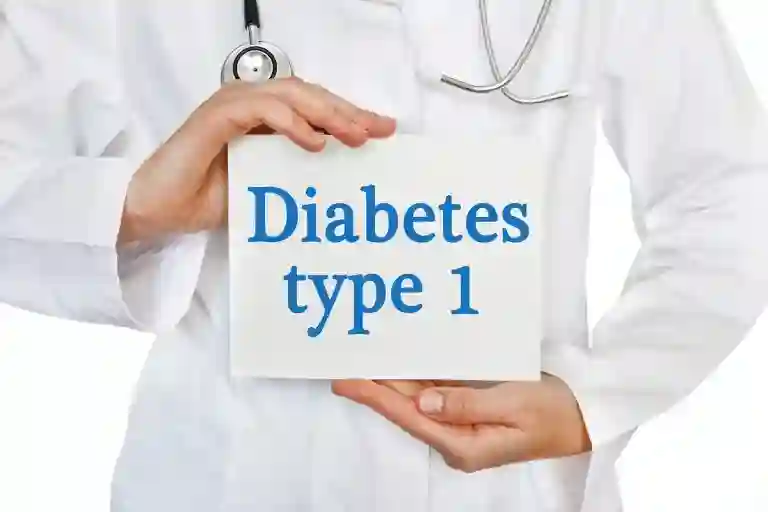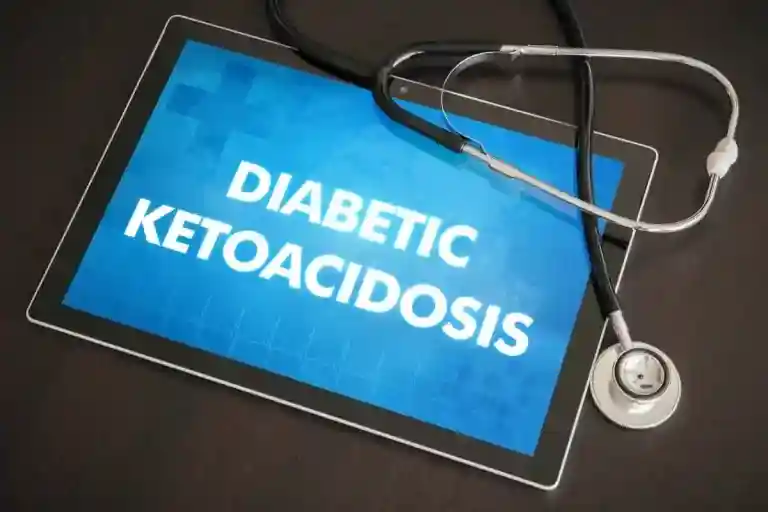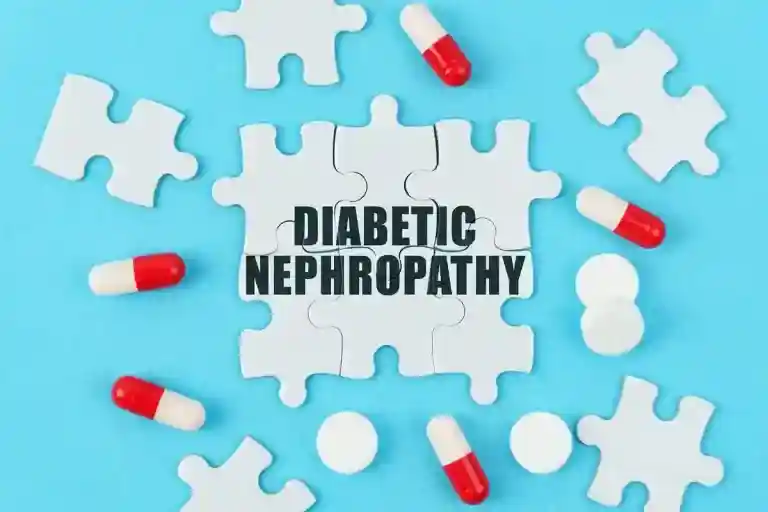What is Type 1 Diabetes?
Type 1 Diabetes is a chronic condition of the body in which the pancreas produces and releases little to no insulin, which is a hormone used to allow glucose to enter the cells to synthesize and produce energy for the body. It is sometimes also referred to as “insulin-dependent diabetes.” Previously, it was known as “Juvenile Diabetes” as it was mostly observed in children, but it has been found that it can occur to anyone at any age.
Type 1 diabetes is different from and less common than type-2 diabetes, and there are various factors that may cause type 1 diabetes. Moreover, type 1 diabetes also has certain side effects and complications that need to be controlled with self-management and following a doctor-recommended lifestyle.
Type 1 Diabetes Symptoms
It can take months or even years to start showing the type 1 diabetes symptoms and signs, and it can happen to anyone at any age. Type 1 diabetes can progress within just a few weeks or months. Its symptoms can appear all of a sudden, but once the symptoms have appeared, they can be subtle yet severe. Some of the common signs and symptoms of type 1 diabetes may include:
- Feeling more thirsty than usual
- Urinating more frequently
- Losing weight rapidly
- Feeling extremely hungry
- Dry mouth
- Fatigue and weakness
- Blurry vision
- Feeling irritable or experiencing frequent mood changes
- Upset stomach
- Vomiting
- Bedwetting in children who don’t have a history of it
Extreme cases of type 1 diabetes may arise and require immediate medical attention due to type 1 diabetes which may show the following symptoms:
- Having a fruity breath
- Shaking
- Confusion
- Breathing rapidly
- Pain in the belly
- Loss of consciousness
Causes of Type 1 Diabetes
The exact cause of type 1 diabetes is not known, but it is thought to be an autoimmune response of the body in which the body attacks itself mistakenly. Such an autoimmune response can destroy the pancreatic beta cells responsible for producing the hormone insulin. Insulin is responsible for aiding glucose to be utilized by the cells of the body for producing energy. Destruction of insulin-producing cells can happen for months to even years without observing any prominent symptoms.
The occurrence of type 1 diabetes is thought to have certain hereditary connections. It has been observed that certain genes may be passed on to the offspring, which increases their likelihood of developing type 1 diabetes. However, despite having the genes that make them vulnerable to developing type 1 diabetes, they may not develop diabetes at all. Among the other causes of type 1 diabetes, the most prominent one has been attributed to a viral infection in which the attacking virus instructs the body’s immune system to start destroying insulin-producing cells of the pancreas.
Type 1 Diabetes Risk Factors
There are many risk factors that can increase the likelihood of developing type 1 diabetes. These risk factors may include:
- Having a parent or sibling with type 1 diabetes
- Possessing certain genes that increase the risk of developing type 1 diabetes
- Being younger than 20 years, as younger people are at a high risk of developing diabetes
Type 1 Diabetes Complications
Type 1 diabetes, if left untreated or uncontrolled, can lead to other health problems in such patients. These complications of type 1 diabetes may include the following:
- Cardiovascular disease: Diabetes can potentially increase the likelihood of developing cardiovascular illnesses such as high blood pressure, blood clots, and high cholesterol, which may lead to conditions and problems such as chest pain, heart stroke, heart attack, and even heart failure.
- Hypoglycemia: Hypoglycemia is the condition of low blood sugar in which the body doesn’t have enough sugar. If left untreated, diabetic hypoglycemia may lead to loss of coordination and speech, confusion, blurry or tunnel vision, muscle weakness, and even an inability to eat or drink properly.
- Hyperglycemia: Hyperglycemia is the condition of high blood sugar, which can occur due to a wrong diet or from not taking enough insulin. This may be corrected by consulting a doctor.
- Diabetic Ketoacidosis: This is a condition in which the body may start to break down fat to produce energy but produce toxic acids. This can lead to nausea and/or vomiting, sweet or fruity smell of breath, experiencing shortness of breath, dryness of mouth, confusion, weakness, and even coma.
- Skin Problems: People with diabetes may be predisposed to developing skin problems such as fungal and bacterial infections, as well as blisters and rashes.
- Retinopathy: Vision problems may happen in people who have had diabetes for over 15 years.
- Kidney damage: People with type 1 diabetes may have kidney damage or nephropathy as a prolonged complication after having had diabetes for over 15 to 25 years.
- Pregnancy Complications: Pregnant women with type 1 diabetes have a higher risk of an early birth, stillbirth, birth defects, and even pre-eclampsia.
- Poor Blood Circulation: Hardening of arteries over time in people with diabetes is especially common in the peripheral parts of the body, such as the feet.
- Nerve Damage: Nerve damage is a common diabetic complication that can cause digestive problems such as nausea, vomiting, and even diarrhea.
- Gum Problems: Dry mouth due to diabetes can cause too much plaque build-up, along with poor blood flow, which may cause problems in the gums and mouth.
Diagnosis of Type 1 Diabetes
Experiencing any of the symptoms of type 1 diabetes may be enough to warrant a visit to a healthcare provider. At the doctor’s office, a simple blood test to check the blood sugar levels may be enough to diagnose type 1 diabetes. The blood test may be a fasting blood sugar test, a random sugar test, or a combination of both. A random blood sugar test is performed at any time of the day to confirm previous diagnosis or a fasting blood sugar test.
Treatment of Type 1 Diabetes
People with type 1 diabetes who are otherwise normal tend to live a healthy life if they manage their blood sugar levels properly. A doctor may recommend certain lifestyle and dietary changes along with insulin adjustment to ensure that the patient’s blood sugar level stays within the normal range.
Anyone with type 1 diabetes needs to take insulin shots to control their blood sugar level. The doctor may recommend insulin of a certain dose, but there are a few different types of shots that have various activation times and duration of activity. As such, there are certain terms that patients must be aware of and discuss with their doctors. These are:
- Onset – It is the time required by the insulin to reach the bloodstream and start reducing the blood sugar.
- Peak – It is the time after onset during which the insulin is active and working the most.
- Duration – It is the amount of time during which the insulin works after onset.
Depending on these parameters, there are various types of insulin available, including:
- Short-acting insulin
It starts working after 30 minutes of taking insulin and reaches peak after 90 to 120 minutes with a duration of around 4 to 6 hours.
- Rapid-acting insulin
It starts working within 15 minutes, reaching a peak after about 60 minutes. The duration of this type of insulin is around 4 hours.
- Intermediate-acting insulin
The onset of such insulin is around 1 to 3 hours, reaching a peak after 6 to 8 hours. It can last longer for almost 12 to 14 hours.
- Long-acting insulin
This type of insulin can last for more than 14 hours to even 40 hours at a time.
Additional medications may also be prescribed in some cases for type 1 diabetes patients to manage other comorbidities. These may include:
- High blood pressure medication
- Cholesterol-lowering drugs
Managing Type 1 Diabetes
The goal of type 1 diabetes management is to keep the blood sugar level within the normal ranges. Usually, managing type 1 diabetes includes doing the following:
- Taking insulin as recommended
- Counting the carbohydrates, fats, and proteins in the food
- Monitoring blood sugar levels regularly
- Exercising daily
- Maintaining healthy body weight and optimum Body Mass Index (BMI)
- Monitoring cholesterol level
- Quitting smoking
Prevention
Type 1 diabetes may not be preventable as it may show no symptoms when in its early stages of development. However, once diagnosed, it can be managed well by making dietary & lifestyle changes along with taking the right amount of insulin regularly. Visiting the concerned doctor on a regular basis is also important for assessing the overall health condition before any complications occur.
At Wockhardt Hospitals, we are dedicated to providing top-notch quality medical care and preventive & therapeutic medicine for the all-inclusive treatment and management of a wide range of health conditions in patients of all ages and health problems. We are supported by critically acclaimed diabetes specialists, consultants, and surgeons who take immense care to provide the most accurate and reliable diagnosis with utmost care and compassion.
FAQs on Type 1 Diabetes
Q. What is the difference between type 1 and type 2 diabetes?
The main difference between type 1 and type 2 diabetes is that type 1 is believed to be caused by an autoimmune response and typically develops relatively early in life. On the other hand, type 2 diabetes is a chronic disease that develops gradually and is often related to lifestyle factors, such as inactivity and obesity. Typically, adults are the ones usually diagnosed with type 2 diabetes. Type 1 diabetes usually starts at an early age, while type 2 is more common in adults and is associated with unhealthy living conditions.


















